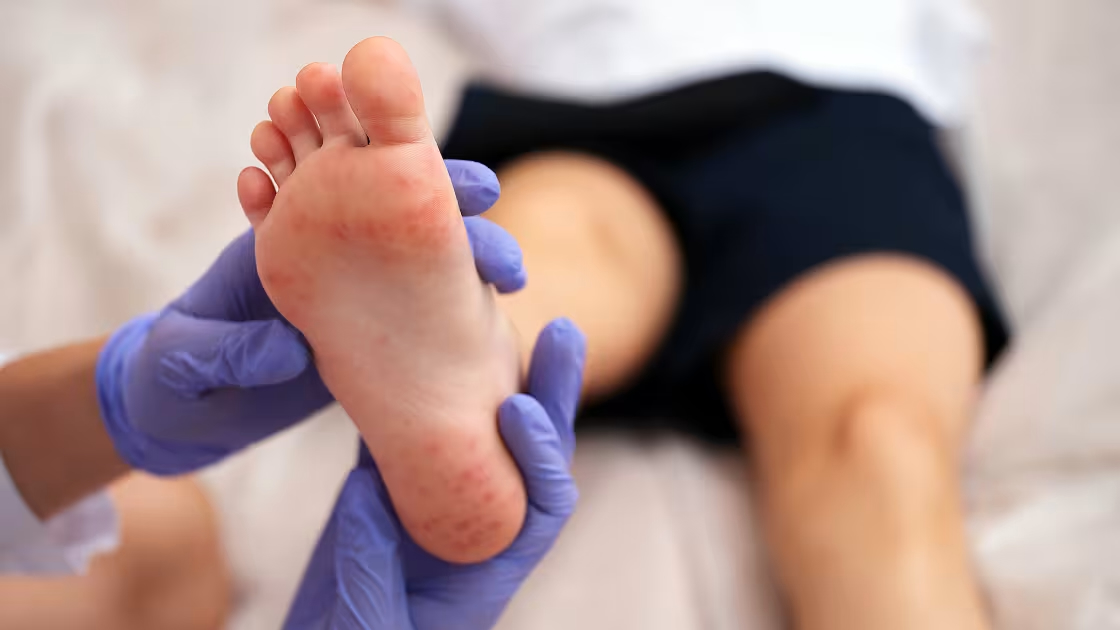
At the site of a race massacre that reduced neighborhoods to ashes a century ago, where murals memorialize a once-thriving “ Black Wall Street,” one African American mother strives to keep others from dying as they try to bring new life into the world.
Black women are more than three times as likely to die from pregnancy or childbirth as white women in Oklahoma, which consistently ranks among the worst states in the nation for maternal mortality.
“Tulsa is suffering,” said Corrina Jackson, who heads up a local version of the federal Healthy Start program, coordinating needed care and helping women through their pregnancies. “We’re talking about lives here.”
Across the nation, programs at all levels of government — federal, state and local — have the same goals to reduce maternal mortality and erase the race gap. None has all the answers, but many are making headway in their communities and paving the way for other places.
Jackson’s project is one of more than 100 funded through Healthy Start, which gave out $105 million nationally in grants this year. Officials call Healthy Start an essential part of the Biden administration’s plan for addressing maternal health.
Other approaches to the crisis include California halving its maternal mortality rate through an organization that shares the best ways to treat common causes of maternal death and New York City expanding access to midwives and doulas two years ago. Several states passed laws this year aiming to improve maternal health, including a sweeping measure in Massachusetts. And last week, the U.S. Department of Health and Human Services announced more than $568 million in funding to improve maternal health through efforts such as home visiting services and better identifying and preventing pregnancy-related deaths.
Locally and nationally, "we need to really identify the birthing people who are at potentially the greatest risk," New York City health commissioner Dr. Ashwin Vasan said, "and then wrap our arms around them throughout their pregnancies.”
Health
A Healthy Start in Tulsa
Besides coordinating prenatal and postpartum care — which experts say is crucial for keeping moms alive — local Healthy Start projects provide pregnancy and parenting education and referrals to services for things like depression or domestic violence. The local efforts also involve women’s partners and kids up to 18 months. And they focus on issues that influence health, such as getting transportation to appointments.
Feeling out of the loop? We'll catch you up on the Chicago news you need to know. Sign up for the weekly Chicago Catch-Up newsletter.
“You try to get them in their first trimester and then work with them to delivery day, and then we also work with the babies to make sure that they reach their milestones," Jackson said.
Jackson got help from the local Urban League as a single mom, and felt called to give back to her community. She's been with Healthy Start for more than 25 years, first through Tulsa’s health department and recently through a nonprofit she started that received about $1 million in federal funds this fiscal year.
“I’m just like a mom to this program,” Jackson said.
Oklahoma overall has a maternal mortality rate of about 30 per 100,000 live births, significantly higher than the national average of about 23. But in Jackson's quarter-century tenure, she said, there have been no maternal deaths among clients.
Pivotal to Healthy Start’s success are care coordinators like Krystal Keener, a social worker based at Oklahoma State University's obstetrics and gynecology clinic, where clients get prenatal care. One of her responsibilities is to educate clients about health issues, like how to spot the signs of preeclampsia or how much bleeding is too much after delivery.
She also helps with practical matters: Many clients don’t have cars, so they call Keener when they need a ride to a prenatal visit, and she assists in scheduling one.
With doctors, Keener serves as a patient advocate. On a recent afternoon, Keener sat in on a prenatal appointment for Areana Coles. A single mom, Coles was joined by her 5-year-old daughter, who was born prematurely and spent time in intensive care.
Coles, 25, said Healthy Start is “probably the best thing that’s happened in this pregnancy.” She called Keener “an angel.”
Together they navigated several recent medical concerns, including dehydration and low potassium levels that put Coles in the hospital.
With Coles' due date approaching, Keener talked about what to watch for around delivery and shortly after, like blood clots and postpartum depression. She advised Coles to take care of herself and “give yourself credit for small things you do.”
During an ultrasound a few minutes later, Coles watched Dr. Jacob Lenz point to her unborn baby’s eyes, mouth, hand and heart. He printed an image of the scan, which Coles immediately showed her daughter.
Keener said she's gratified that Coles would not be giving birth prematurely this time.
“You made it to term – yay!” she told her client.
Coles smiled. “My body can do it!”
Improving medical care
While programs like Healthy Start focus on individual patient needs, other efforts manage the overall quality of medical care.
California has the lowest maternal mortality in the nation — 10.5 per 100,000 live births, less than half the national rate. But that wasn't the case before it created a “maternal quality care collaborative" in 2006.
Founded at Stanford University’s medical school in partnership with the state, it brings together people from every hospital with a maternity unit to share best practices on how to deal with issues that could lead to maternal injury or death, like high blood pressure, cardiovascular disease and sepsis.
“When you look at the rate of maternal death in the United States compared to California, they basically ran neck-and-neck until it was established,” said Dr. Amanda Williams, clinical innovation adviser for the collaborative. “At that time they totally separated and California started going down. The rest of the country started going up.”
In the collaborative, hospitals get toolkits full of materials such as care guidelines in multiple formats, articles on best practices and slide sets that spell out what to do in medical emergencies, how to set up medical teams and what supplies to keep on the unit. The collaborative also tackles issues such as improving obstetric care by integrating midwives and doulas – whose services are covered by the state’s Medicaid program.
At first, some doctors resisted the effort, figuring they knew best, Williams said, but there’s much less pushback now that the collaborative has proven its value.
MemorialCare Miller Children’s & Women’s Hospital Long Beach started participating around 2010. The collaborative helps “vet through all the research that's out there,” said Shari Kelly, executive director of perinatal services. “It’s just so important to really understand how we as health care providers can make a difference."
For example, if a woman loses a certain amount of blood after a vaginal delivery, “we know to activate what we call here a ‘code crimson,’ which brings blood to the bedside,” Kelly said. “We can act fast and stop any potential hemorrhage.”
She said the collaborative has also helped reduce racial inequities — bringing down the rate of cesarean sections among Black moms, for example.
In July, U.S. Centers for Medicare & Medicaid Services proposed a similar initiative to California's, focused on the quality of maternal care nationwide: the first baseline health and safety requirements for maternal emergency and obstetric services in hospitals.
A community perspective
Experts said getting maternal mortality under control at a national level requires tailoring solutions to individual communities, which is easier when programs are locally run.
New York City has a goal of reducing maternal mortality overall — and specifically achieving a 10% drop in Black maternal mortality by 2030. Statewide, Black residents are about four times more likely to die from pregnancy or childbirth than white residents.
The city is starting with, among others, low-income residents and those living in public housing. The New Family Home Visits Initiative gives pregnant people and those who've given birth visits from professionals such as nurses, midwives, doulas and lactation consultants. Vasan said more than 12,000 families have gotten visits since 2022.
Nurse Shinda Cover-Bowen works for the initiative’s Nurse Family Partnership, which has her visiting some families for 2 1/2 years, well beyond the pregnancy and birth. She said “that consistency of someone being there for you and listening to you and guiding you on your mother’s journey is priceless.”
Being grounded in the local community — and its history — is also crucial for Healthy Start projects. The lingering effects of racism are evident in Tulsa, where in 1921, white residents are estimated to have killed 100-300 Black people and destroyed homes, churches, schools and businesses in the Greenwood section. That's where Jackson lives now, and where health disparities persist.
Being relatable is valuable for Black women, who may distrust the health care system, Jackson said. Plus, knowing the community makes it possible to work closely with other local agencies to meet people's needs.
Denise Jones, who enrolled in Healthy Start in February, has struggled with anxiety, depression and drug addiction, but has been sober since April.
In mid-July, baby items filled her room — a crib, a bassinet, tiny clothes hanging neatly in a closet — in anticipation of her child’s arrival. Jones, 32, flipped through a baby book, pointing to a sonogram of her son Levi, who would be born within a couple of weeks.
She said she feels healthy and blessed by the help she's gotten from Healthy Start and Madonna House, a transitional living program run by Catholic Charities of Eastern Oklahoma.
“I have professionals that are working with me and give me support. I didn’t have that with my other pregnancies,” she said. “I’m at one with my baby and I’m able to focus.”
___
Associated Press data journalist Nicky Forster in New York contributed to this report.
___
The Associated Press Health and Science Department receives support from the Howard Hughes Medical Institute’s Science and Educational Media Group. The AP is solely responsible for all content.



